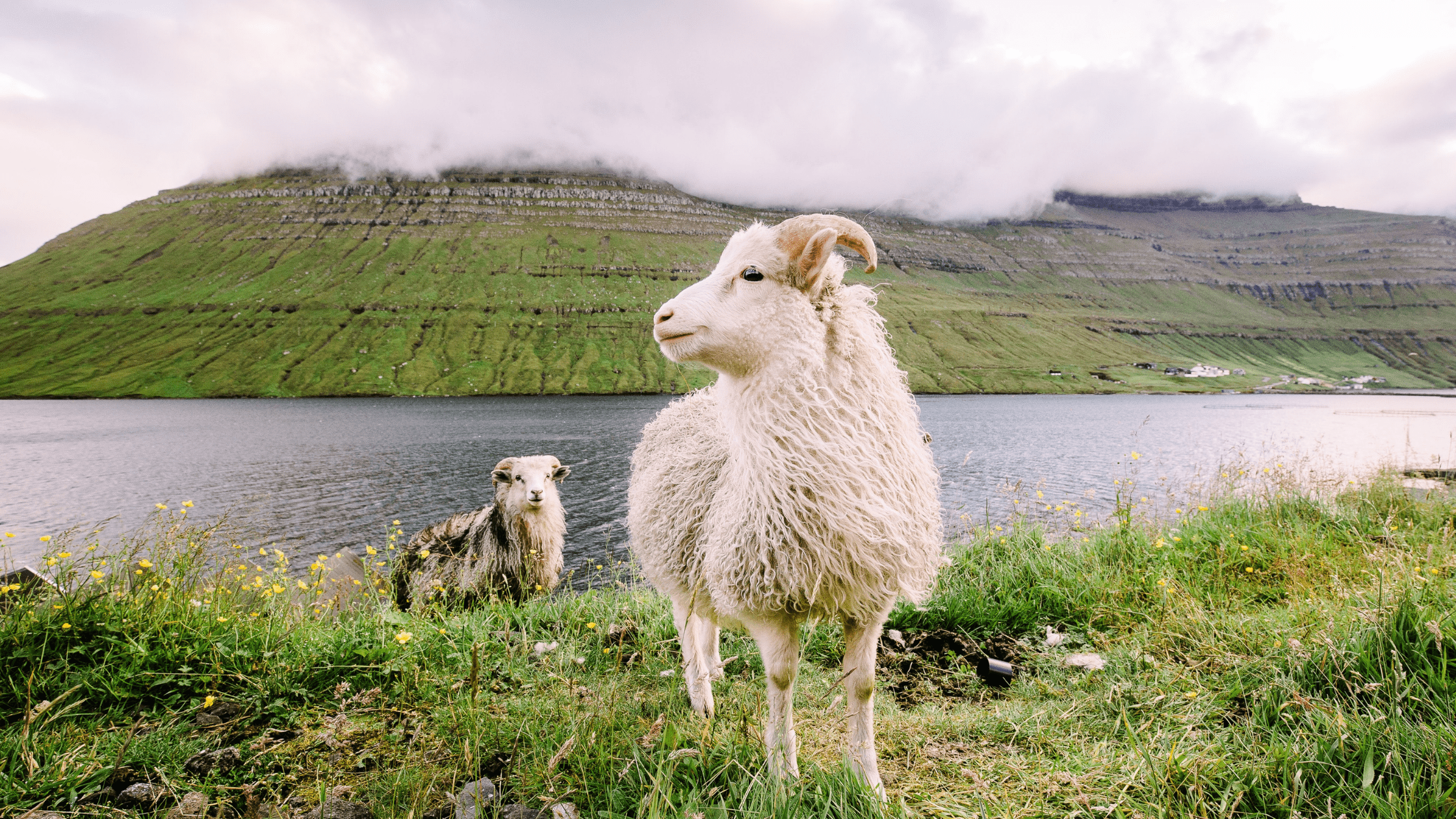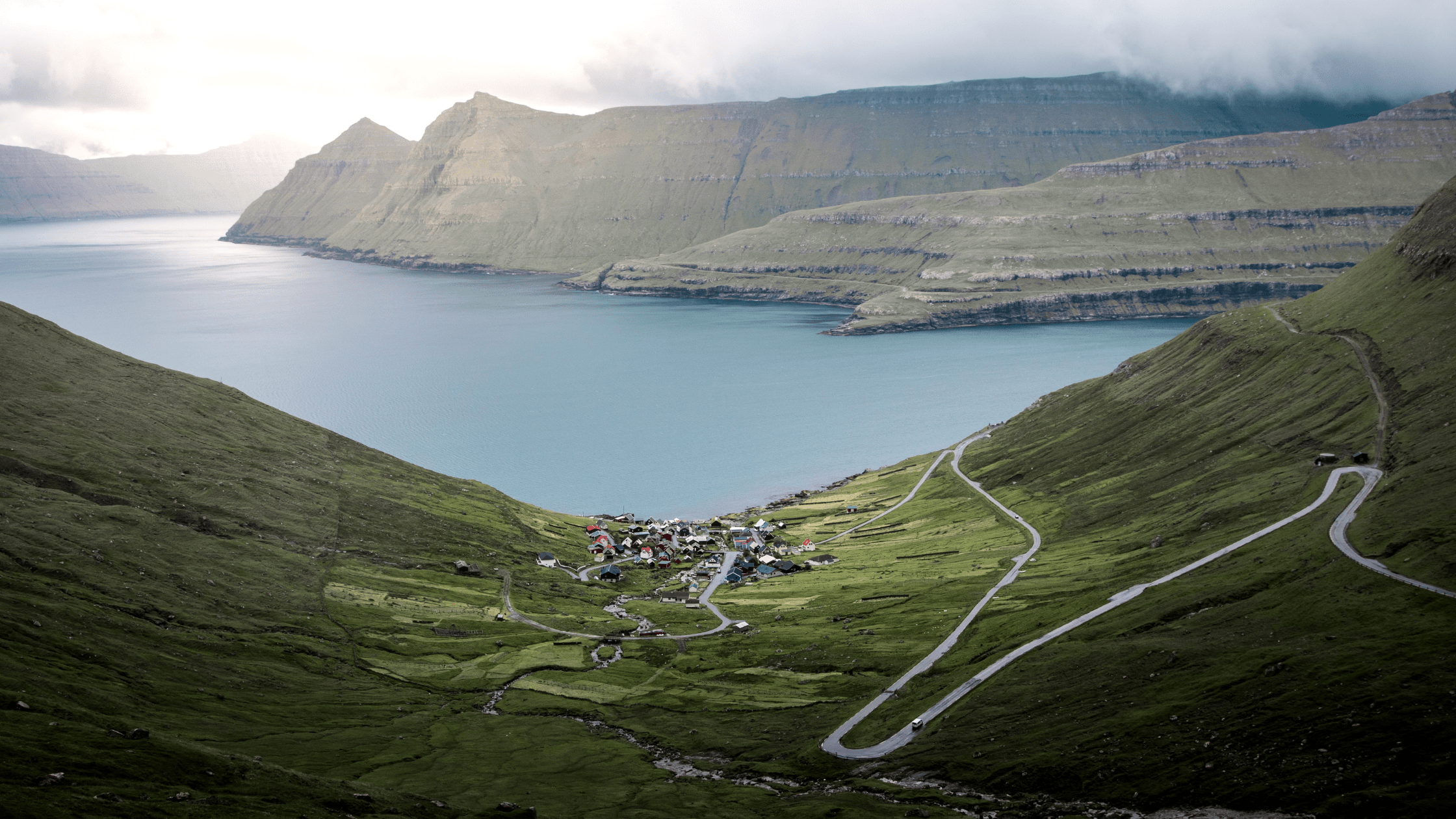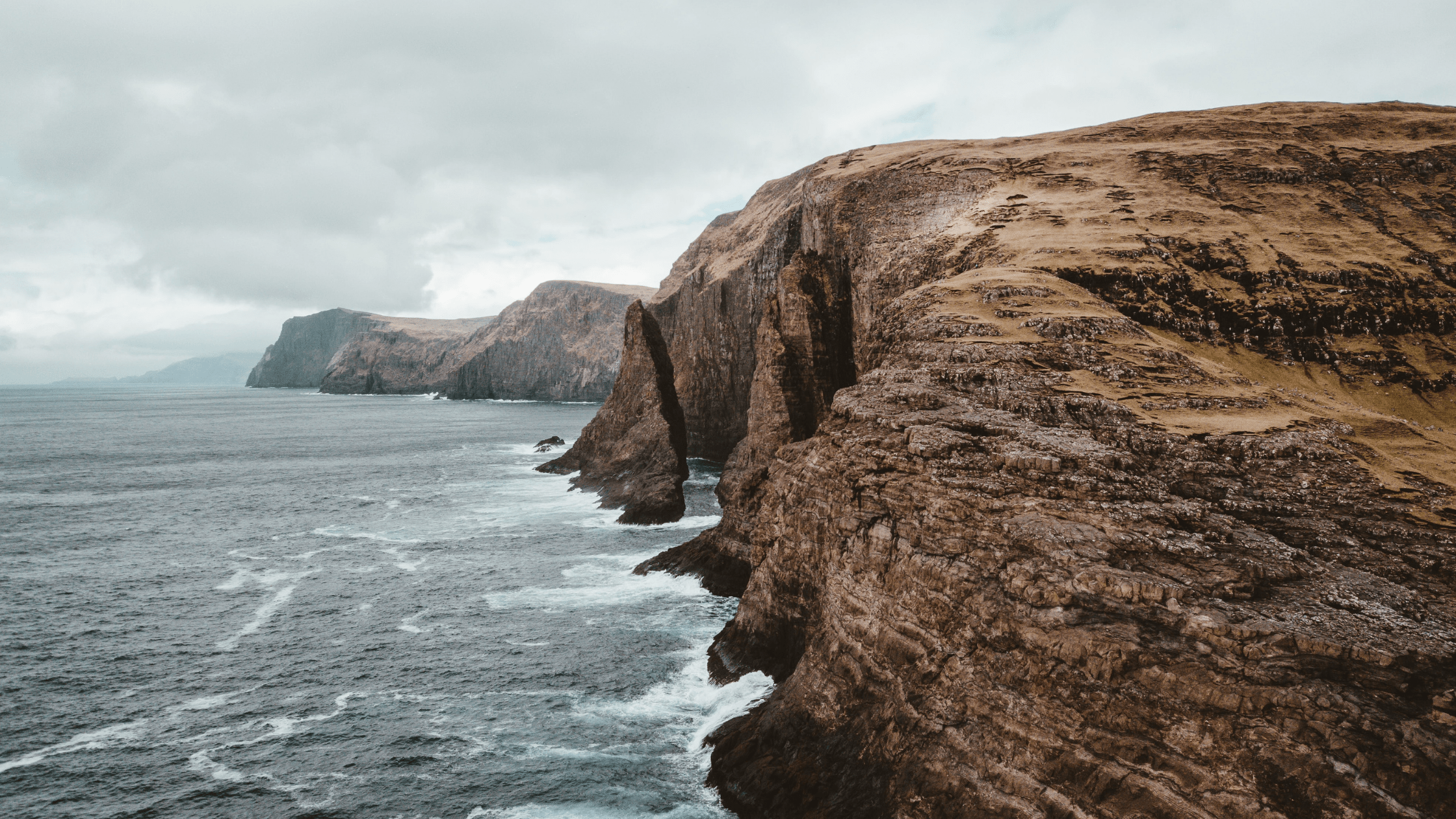General Information
| POPULATION | 48,678 thousand |
| LANGUAGE | Faroese and Danish |
| CAPITAL | Tórshavn |
| CURRENCY | Danish Krone |
Fun Facts
- No point in the Faroe Islands is further than 5km (3 miles) from the sea
- Inhabited for almost 1,500 years
- More sheep than humans
- One of the fastest browsing speed in the world
- Highest mountain is Ndu at 882 meters sea level
Faroe Islands
The Faroe Islands are located in the North Atlantic ocean between Iceland, Norway and Scotland. The Faroe islands are made up of 18 islands and is 1,400 square kilometres.
Ethnicity
There are 48,678 thousand people living in the Faroe Islands.
- 87% Faroese
- 8% Danish
- 5% Other

Economy
85% of people living in the Faroe islands are Evangelically Lutheran. 40% of the population lives in the capital Tórshavn situated on Streymoy Island. Fishing makes up most the populations jobs which makes fish the largest export at 90%. In 2014 the Faroese economy was ranked the 166th largest economy in the world. The Faroe Islands are actually part of the Kingdom of Denmark which is why there are so many ties to Denmark, although the islands are self governing and like to be independent. Faroese people have come up with creative ways to promote their islands, such as strapping cameras to sheep so that Google Maps can do a street view of the islands.
Food
Being an island surrounded by fish, the main food is seasonal fish, although there might be the occasional lamb chop. Considering the rugged landscape it is very hard to produce fruit or vegetables. The vegetables are mostly root vegetables such as potatoes, rhubarb and turnip. In the Faroe islands the most popular drink is beer. Whale capturing is allowed in the Faroe islands because they are not part of the EU.
Some popular dishes can include:
– Toskur (cod)
– Skerpikjøt (fermented mutton meat)
– Garnatálg (cured sheep intestines)
– Lamb Soup
– Laksur (salmon)
Places
The Faroe islands are very picturesque with the rugged scenery. From the quaint little towns to the dramatic cliff faces. The people of the Faroe Islands have really learnt to live off the land. All 18 islands are volcanic this is because they lie on the Eurasian plate. The islands are separated by narrow sounds.
Some places of interest might be:
– Mykines
– Tórshavn
– Vágar
– Múlafossur waterfall
– Kallur Lighthouse
– Trælanípa
– Tjørnuvík
– Saksun
-Gjogv
– Vestmanna
History
While there is little evidence of early life on the Faroe Islands, we do know that Gaelic and Norse settlements existed. The name Faroe Islands comes from an old Norse word that means “Sheep Island.” Operation Valentine was the British occupation of the Faroe Islands during World War II. Shortly after the battle, the British army left, and Denmark retained possession of the Faroe Islands.




Language Basics
| English | Faroese |
| Hello | Halló |
| Goodbye | Farvæl |
| Yes | Ja |
| No | Nei |
| Good Morning | Góðan Morgun |
| Good Afternoon | Góðan Dag |
| Please | Dáma |
| Thank You | Takk |
| Excuse Me | Orsaka |
Published on the 15th of April 2021
